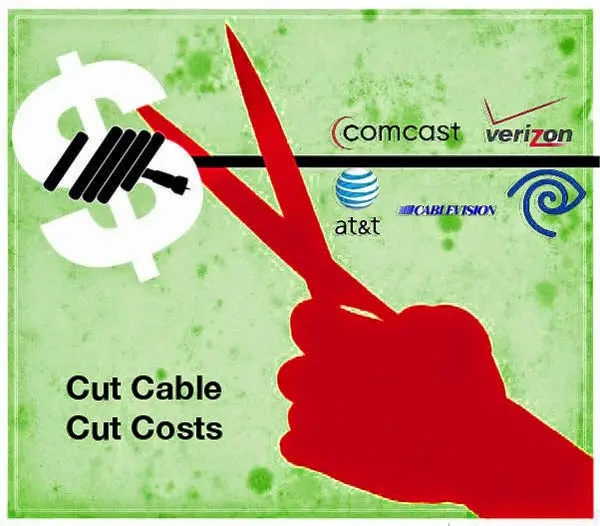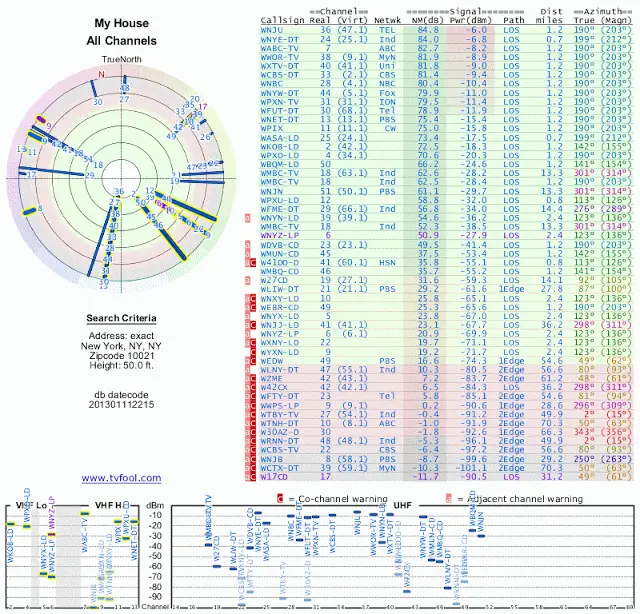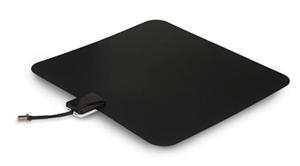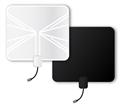You want to do it, but you just don’t know how: get rid of cable or pay TV. I wanted to do just that last year and spent several months researching options and coming up with a solution that made sense for me. When I finally cutover last year, it was worth the effort. Now, I’m documenting what I did to make it easier for you. If you have any questions or comments please leave them on the blog and I’ll be happy to respond. So here we go: everything you need to know to get rid of cable.
Overview
Even with the so-called triple play, cable or pay TV is just too expensive. In today’s blog post, I’ll show you how you can get HD TV programming for free and save yourself dozens if not hundreds of dollars each month. All it takes is the ability to follow some basic instructions and a willingness to put in a little work.
This blog post will be broken up into three parts.
- The technical aspects of getting rid of cable
- The choices and sources available for content and how to get them on your TV
- The options for DVR functionality even if you dump cable.
THE PROBLEM OF CABLE TV
ALTERNATIVES TO CABLE
- An Antenna: Believe it or not, an antenna is one of the best ways to get free high-definition TV. Many people still don’t know that all the local and regional TV stations (CBS, ABC, NBC, FOX, PBS, ION, WB, etc) broadcast all their signals for free in high definition. Not only are the signals broadcast in HD, they are also broadcast in full 5.1 surround sound; and because the signals are sent over the air, they are generally sharper and of better quality than the same channel on cable because the cable providers apply compression that degrades the signal so that they can properly send it over the cable wiring.
- Media Set Top Box: A set top box is a device that connects to your home’s Internet connection and gives you access to free and paid programming and content. There are currently three major vendors and products in this arena: AppleTV, Roku, and Boxee. These set top boxes will allow you to install applications and services that provide content. All of the set top boxes will have the ability to watch programming from Netflix and Hulu and some will also offer Amazon’s streaming service and other niche providers. You will need paid accounts to access any of these premium services.
- A Smart TV: A smart TV provides access to some of the same services as a media set top box so that you can have access to additional content and programming by connecting your television to the Internet. Normally, Smart TVs will have the Neflix, Hulu, and Amazon Streaming applications installed. These applications will then allow you to log into these services and watch the television and movie programming that they offer. You will still need an account to access these services.
- Web Sites: Just about every major content provider today is providing their television programming on their web site. You can usually watch TV episodes the day after they air in case you missed them. It’s really incredible what entertainment is available online.
OVERVIEW TO CUTTING THE CORD
For those who live in or near a city, the option of an indoor antenna is simple and straightforward and there are some slick, stylish and aesthetic options. For those who live 70 or 100 miles away, you will need to install an antenna either in your attic, on the side of your house, or on top of your house.
Whether you can go slick and stylish or need to go outdoor, here’s what you need to do:
- Find out the available channels in your area.
- Find out what kind of antenna you need to get the programming you want. This will determine if you need an indoor, outdoor, omnidirectional, or directional antenna.
- Get a solution put together.
- Install it.
STEP BY STEP
Step 1: Finding Available Channels in your Area
So, Your first step is to find available channels in your area and you do this by going to www.TVFool.com. This is an unbelievable site and resource for cutting your dependence on cable.
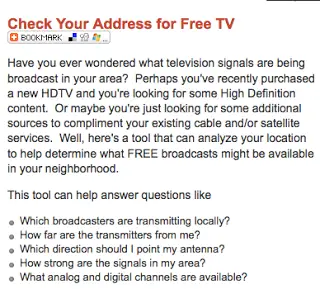 |
| www.TVFool.com has a slick address finder that will show you which stations are in your area, how far away they are, and their direction from your home. |
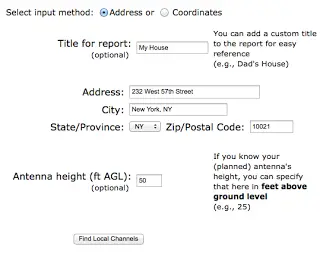 |
| Enter in the address where you want to watch TV |
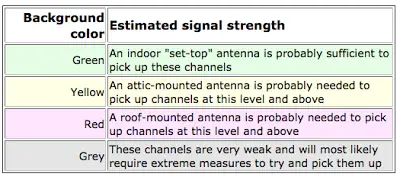 |
| The chart is color coded to let you know what channels you can get with a certain kind of antenna. |
You’ll notice from my map here that I’m able to get every major TV network plus many independent and public broadcasting stations with an indoor, multidirectional antenna (those are all the green areas). If I have an amplified indoor antenna, I can likely get the areas in yellow and if I want to get the red or grey areas, then I’ll need a good directional antenna mounted on the side of my house.
Once you have an idea of what antenna you need, you can either put together a solution yourself or call the folks at www.solidsignal.com and they will put together a complete solution for you. I’ve personally put together all my over the air solutions with the folks at Solid Signal and I have nothing but high marks to their products and services and don’t have any hesitation recommending them.
The first is the Mohu Leaf. It’s available here on Amazon for $39.99. It’s a paper-thin (not an exaggeration–think a plastic laminated piece of paper–that’s how thin!) antenna and really works and works well. In fact, it’s so thin you can put it right onto the back of the TV. It even comes with thin velcro so you can do that! It’s reversible and has black on one side and white on the other.
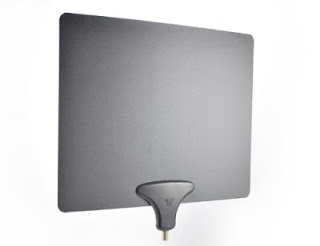 |
| The Mohu Leaf |
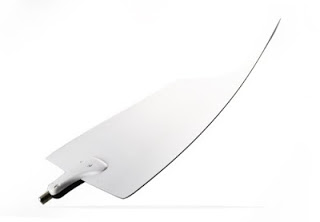 |
| The Mohu Leaf is paper-thin and reversible. It’s white on one side and black on the other |
The second solution is pretty much identical to the Mohu Leaf. It’s the Solid Signal HD-BLADE flat indoor antenna.
You can check it out hereat Solid Signal for $28.99. As you can see, it’s paper-thin and mounts immediately behind the TV. Like the Mohu Leaf, it’s reversible and is black on one side and white on the other.
In my particular case, what I did was a hybrid approach. I wanted both my local stations, which were pretty close and also I wanted some distant stations. I therefore installed both an omnidirectional antenna and a high-powered directional antenna and using a splitter/combiner I was able to combine the signal to get the best of both worlds.
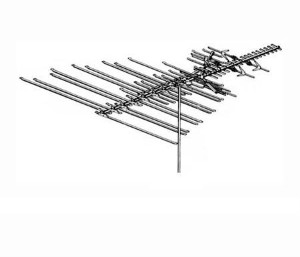 |
| I installed this Winegard HD-8200U to the side of the house and I’m now getting TV stations 70-90 miles away. |
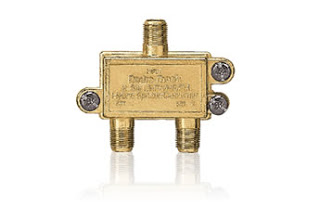 |
| I used this RadioShack splitter/combiner to combine two antenna signals. The results are gorgeous! |
Why two antennas you might ask? Well, I wanted to setup my solution and be done with it.
What I didn’t know ahead of time was that the antenna rotators now come with a remote control. Thus, you can pre-program the direction of the antenna for a particular station. You then press a button and presto! It turns the antenna to the specified direction and you’re done.
WAIT! I miss the programming information!
There are some things that cable is great for. Remember, I’m not knocking cable. I doubt you are either. What we’re contesting is the high monthly fees. One thing that is really great about cable TV is the on-screen guide for programming. As a general rule, if you switch from cable to an antenna you will lose that ability to scroll through program titles and have an on-screen guide for upcoming programming.
If you want to keep that on-screen guide, all is not lost. You can still have that feature, but it means buying an additional product: a TiVo. TiVo is a household name, but in case you are not familiar with it, TiVo is a DVR that really revolutionized television watching many years ago with its features and ease of use.
Today, TiVo sells stand-alone boxes (much like your cable box) that will record one or more programs but also give you an online television guide for programming–even for service through an antenna! The only drawback is that you need to purchase a TiVo and pay an monthly fee to get this functionality. For some, adding the cost of the TiVo plus service defeats the reason they are dumping cable (though it’s probably cheaper to use a TiVo). For others, dumping cable and adding a TiVo may be the best compromise of all. Simply put, if you need the on screen guide, then TiVo will do the trick and it will also give you lots of additional functionality (like DVR) and flexibility (apps and streaming content providers) that may make it a very appealing solution. You can go to TiVo’s introduction here to learn more about the TiVo and the cool things it offers. TiVo has a specific link and explanation if you want to use TiVo with an antenna here: http://www.tivo.com/products/tivo-walkthrough/tv-source/antenna/index.html
If you have your TV setup as a home theater, with surround sound, or with external speakers, TiVo may be the best solution for you. The TiVo models designed for antennas have a built-in TV tuner. So the TiVo decodes the antenna signal and then passes it via HDMI. The TiVo Premiere XL4 is even THX certified and allows you to properly color-correct and calibrate your HDTV signal.
My simple point is that TiVo offers lots of features. It’s a fantastic product and may be a perfect fit for getting DVR functionality, on-screen guides, and more at a reasonable price that beats cable. It’s worth exploring.


